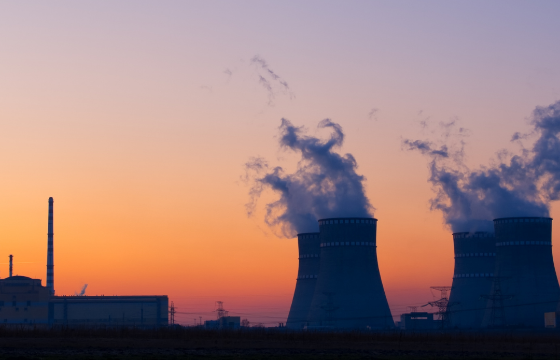Nothing much ever happens in the world of business or politics on December 31: everyone just wants to unwind and have a few drinks to ring in the new year. But in 2021, the European Commission thought it would make the last day of the year memorable and sent a draft proposal to EU member states, which is then published on New Year’s Day 2022. It suggested that nuclear energy should be classified as climate-friendly.
This article looks at the role that nuclear energy might play in the green energy transition, examining the reaction to the EU’s proposal and considering the pros and cons of nuclear’s inclusion in the union’s taxonomy—a classification system aimed at defining environmentally sustainable investments.
Rocking the green boat
Predictably, the plan to include atomic energy in its sustainability guidance caused quite a backlash. Opponents accused the Commission of greenwashing - i.e., presenting an environmentally responsible image while pursuing policies that, in fact, harm the environment - and cited security threats, radioactive waste, and prohibitive construction costs as major concerns. The Commission, however, stated in its press release that it saw nuclear as “a means to facilitate the transition towards a predominantly renewable-based future” and promised to set out “clear and tight conditions” for the safe and effective use of the disputed energy source.
The proposal has also deepened the division within the EU. With 70% of its power coming from nuclear, France is heavily reliant on this energy source, while Germany is currently phasing out its nuclear plants, with the remaining three to be turned off by the end of 2022. And that are only the two biggest economies in the EU; many other member states don’t see eye to eye on the issue either. The countries in the eastern part of the bloc are typically in favor of nuclear energy, while Austria is not only opposed to it but ready to sue the EU over its inclusion in the union’s taxonomy for sustainable activities. The rift is wide, and it remains to be seen how, or if, it will be healed. But is either party right? Should nuclear energy be consigned to history as dangerous and unsustainable, or can it contribute to the transition to a green future, and if so, how?
Nuclear - friend or foe?
Advocates say that nuclear power plants generate electricity without causing CO2 emissions, and while this claim is true, it is only true once a plant is in operation. First, it needs to be built, and the uranium mined and transported, all of which emits CO2 - over two million tons a year in Germany alone. With the International Energy Agency (IEA) predicting that global electricity use will have to more than double if we are going to achieve net-zero emissions by 2050, it is clear that renewable energy alone will not suffice - just think of the often-cited weakness of two of the most common types, solar and wind: “The sun doesn’t always shine, and the wind doesn’t always blow.” So, proponents of nuclear energy argue, that the road to net-zero will be faster and easier if atomic energy is thrown into, or rather continues to be, in the mix. But what about the costs?
EU Internal Market Commissioner Thierry Breton recently said that the EU will need to invest €500 billion in new nuclear energy facilities - more about those later - by 2050, in addition to the €50 billion that should be spent on the already existing nuclear power plants by the end of this decade. Incidentally, Breton is French and supports the EU’s proposal to consider atomic energy as a green alternative to fossil fuels. Extending the lifespan of a reactor is considerably cheaper than building a new power plant, which is the main reason why very few power plants are being built in the first place. According to the International Atomic Energy Agency, as of May 2021, 52 nuclear reactors were under construction worldwide, and only four were in the EU - two in Slovakia and one each in Finland and France. In comparison, 193 shut down permanently.
New power plant projects often take longer than originally planned, and the costs are exorbitant. France, for instance, began the construction of its new reactor in Flamanville in 2007, with costs estimated at 3.4 billion euros. It should have started operating in 2012, but as things stand, it is only set to do so in 2023, and the French Court of Auditors puts the total cost of the project at 19 billion euros to date. Finland’s new nuclear reactor, Olkiluoto III, started up last December - some 12 years behind schedule and with construction costs having increased from around three to almost ten billion euros during that period. Projects like the ones in France and Finland are anything but resource-efficient, and the big question is: who will want to invest so much time and money in an outdated form of energy generation? “Wait a minute,” cry the advocates of atomic energy, “it’s not outdated at all.”
But are they right? Are there reliable and sustainable nuclear technologies worth investing in, or is it time to say goodbye to nuclear energy once and for all?
